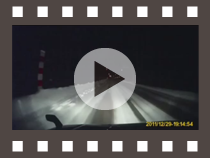
Technologies that use quasi-zenith satellites to support the operations of winter service vehicles
The GPS signals that are currently used in Japan are unstable and their position error is 10m, a considerably large error. This is because the number of available satellites are limited and the ionosphere reduces the accuracy of the signals.]
The Japanese government is implementing a project in which Michibiki quasi-zenith satellites have been launched in order to achieve stable, highly accurate positioning signals (an error < 10 cm). The government plans to start this service in FY 2019.
We are developing an operation support system for snow removal vehicles that uses quasi-zenith satellites. With this new system, snow removal vehicles will be able to determine their locations with high accuracy by using satellite positioning information. This information will be used in combination with high-accuracy map information. This system aims to keep snow removal vehicles from deviating from their lanes during snow removal and to forecast the risk of hitting road accessories such as guard rails that are hidden under the snow. Vehicle operators will be able to avoid such risks by using guidance provided through the onboard monitor.
This system is being tested for a snow blower that is used for removing snow to widen the road shoulder.
We are planning to further improve technologies for autonomous driving by combining this system with communication and sensor technologies. The system will afford labor savings and work optimization by enabling one-person operation of the snow removal vehicle--operation that is currently done by a driver and an assistant.

